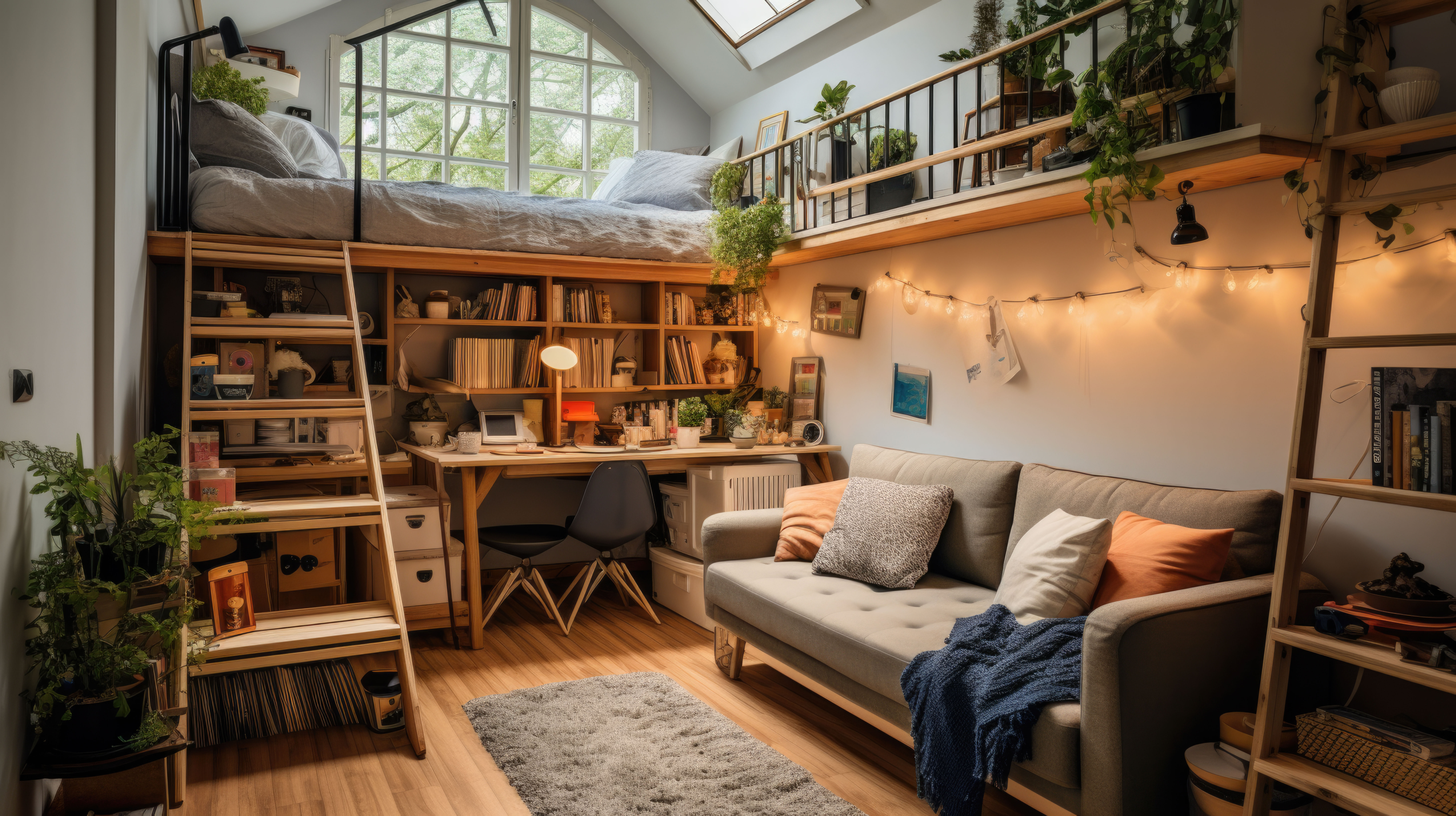
Maximising small spaces is a challenge many homeowners face. Whether you're in a studio apartment or a cosy house, space is often at a premium. Effective loft design can be a game-changer in this context. It not only enhances the aesthetic appeal of your home but also offers practical solutions for space constraints. In this article, you will find valuable tips and insights to help you transform your loft into a functional and inviting space.
The Challenges Of Small Spaces
Small spaces present several issues. One of the most prevalent is limited storage. Many homeowners struggle to find adequate room for their belongings. Another issue is the lack of distinct areas for different activities like working, sleeping, and entertaining. In smaller homes, these activities often overlap, creating a cluttered and disorganised environment.
Lofts offer a practical solution to these challenges. They create an additional layer of space, effectively doubling your floor area without expanding the footprint of your home. With a well-designed loft, you can segregate activities. For instance, the lower level can serve as a living area, while the loft can be a quiet retreat for sleeping or working. This vertical use of space efficiently addresses the issues associated with small living spaces.
Planning The Layout
Strategic layout planning is fundamental to maximising the utility of your loft space. The right layout serves multiple functions without feeling cramped or cluttered. Companies like Beechwood Homes are experts in creating designs that optimise small spaces. It's not just about fitting furniture but about optimising the flow and utility of the area.
One effective approach is to divide the loft into zones. Let's say you're a remote worker. You could designate one corner of the loft as your home office. Place a desk against a wall, facing away from the sleeping area to minimise distractions. This allows you to separate your work life from your personal life, even in a confined space.
If the loft is your bedroom, prioritise the bed's position. It should be in a place where you can move freely around it. The bed's placement will set the tone for the rest of the space, helping you decide where to fit other essential furniture pieces.
Choosing The Right Furniture
Furniture plays a pivotal role in how a space functions and feels. In a loft where square footage is limited, the right furniture can be transformative.
Multi-purpose furniture is a smart choice for lofts. Take the sofa bed, for example. During the day, it serves as a comfortable sitting area. At night, it can easily convert into a bed for guests or for yourself. This dual-purpose approach saves you the space of an extra bed and sofa, which is especially useful for studio-type lofts.
Storage ottomans are also worth mentioning. These can serve as coffee tables, footrests, or extra seating. The hidden storage inside is perfect for stowing away blankets, books, or electronics.
Effective Use Of Colour
Colour has a significant impact on how spacious a room feels. Certain shades can either compress or expand the perception of space. For instance, darker hues tend to make rooms feel more confined, while lighter tones give an impression of openness.
To enlarge the visual scope of your loft, consider adopting a monochromatic colour scheme. Employ varying shades of a single hue, from light to dark. This approach minimises visual clutter, making the space feel unified and expansive.
Alternatively, cool colours like blues, greens, and greys can also be effective. These shades recede from the viewer's eye, creating a sense of depth. Using these colours on larger surfaces, such as walls or big furniture pieces, can be particularly impactful.
Lighting Matters
In loft design, lighting plays a crucial role that extends beyond mere visibility. It influences mood, highlights architectural features, and can even create an illusion of spaciousness. Therefore, the selection of light sources deserves careful consideration.
Natural light should be your first choice. Skylights or large windows can flood the loft with daylight, making it feel airier. If your loft lacks these features, consider installing mirrors strategically to reflect any available natural light.
When it comes to artificial lighting, flexibility is key. Use a combination of task, ambient, and accent lighting. Task lights like desk lamps provide focused illumination for activities like reading or working. Ambient lighting, such as ceiling fixtures, generates a general glow that fills the room. Accent lights like wall sconces or pendant lamps can add a touch of drama, spotlighting specific areas or objects.
Avoid using just one central light source, as it can make the loft look flat and uninteresting. Distributed lighting gives depth and texture to the space.
Importance Of Good Loft Design
The impact of thoughtful design on a loft space cannot be overstated. It not only determines the aesthetic appeal but also directly influences how functional the space will be. A well-considered layout, smart furniture choices, appropriate colour schemes, and effective lighting all contribute to making the most out of limited square footage.
In small spaces, a well-designed loft becomes more than just an extra room; it evolves into a multifunctional area that enhances your lifestyle. Whether it's creating separate zones for work and relaxation or maximising storage options, good design can solve many of the challenges associated with limited space.
With the tips and insights provided in this article, you are now equipped to embark on your own loft design project. Prioritise functionality and aesthetics, and your loft can become the versatile, inviting space you've always wanted.